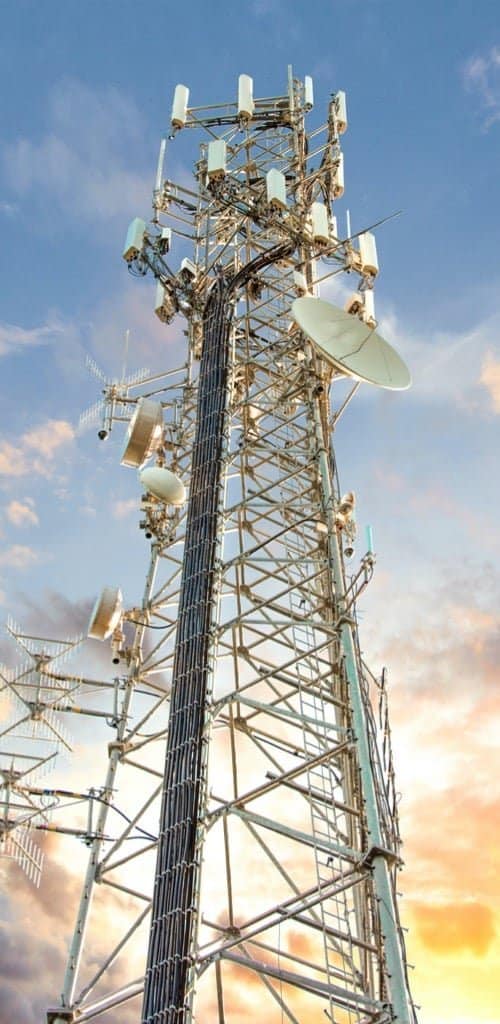If you've ever wandered through a city, you may have seen tiny cell towers for 5G on the poles of street lights. They appear like tiny boxes, but they're actually broadcasting wireless signals from cell phone providers to your mobile.
They are replacing larger built cell towers. While they're less noticeable, they still can create problems for those who live nearby.
The FCC's Radiation Exposure Thresholds
The FCC's Radiation Exposure Thresholds define the safe distance that a person can be exposed to electromagnetic radiation from wireless devices. The limits for exposure are based on research that show that RF energy could be harmful to human health.

The absorption rate specific (SAR) is an indication of the amount of radiofrequency energy absorbed by tissue. It's usually 1.6 Watts per kilogram averaged over one Gram of tissue.
Since 5g is able to transmit at higher frequencies this could be able to create more energy on the skin as well as other body parts. what is a safe distance from a 5g cell tower can lead to a wide range of potential harms, including exacerbated development of skin diseases such as dermatitis and cataracts, and skin cancer.
Because of the potentially harmful effects of radiation from 5G, PSU has chosen to set a general localized power density limit of 4 mW/cm2 based on the average over 1 cm2, and never to exceed 30 minutes for all 5G services at 3000 GHz. This localized limit is in accordance with the peak spatial-average SAR of 1.6 W/kg, which is averaged over 1 g of tissue at 6 GHz.
The FCC's Maximum Exposure Thresholds
If you've ever operated a cell phone, you probably know that a safe distance from the tower is around 400 meters. This is because the transmitting power of a cell tower increases dramatically the further away your location from the tower.
While it sounds like an ideal idea however, people who live close to towers could be more prone to health problems. For instance, a 2014 study in India found that residents who lived within 50 meters from cell towers suffered significant more health issues than those living further distance from them.
However, this study also showed that residents who moved to areas that were further from cell towers noticed their symptoms return to normal within a couple of days. Other studies have demonstrated that exposure to extreme frequencies of radiofrequency electromagnetic fields (EMFs) could cause brain tumors, cancer and other health issues.
This is due to the fact that radiofrequency radiation, which is used in wireless communication, can penetrate the human body's outer layer, the skin. It is vital to be aware of this since the skin functions as a protective barrier against injuries caused by mechanical forces, infections caused by pathogenic microorganisms and the entry of harmful substances. Additionally, it is the most important organ of the human body, and is accountable for keeping the integrity of the other organs.
The FCC's Minimum Exposure Thresholds
The FCC's Minimum Exposition Thresholds depend on several assumptions that are not supported by scientific evidence. This includes the false assumption that exposures of a short duration to RF radiation are safe due to minimal absorption into body (i.e. the heating of tissues).
The assumption is also ignoring the more extensive penetration of ELF components of modulated RF signals as well as the consequences of brief bursts of heat caused by RF pulses. https://canvas.instructure.com/eportfolios/2062694/Home/Are_usually_safest_distance_from_a_5G_cell_Structure do not correspond with the current understanding of biological consequences of RF radiation. Therefore they should not be considered for health protection exposure standards.
Furthermore to that, ICNIRP and FCC limit their maximum exposure limits to local peak SARs based on the peak frequency of absorption (psSAR) which is not a sufficient dosimetric tool to assess the amount of exposure to RF radiation. Particularly, psSAR is inaccurate for frequencies above 6 GHz. Additionally, psSAR hasn't been evaluated for RF radiation with co-exposure to other environmental agents , such as sunlight. Interactions of RF radiation with other environmental agents could result in antagonistic or synergistic results. This could result in an increased risk of adverse health effects. For example, co-exposure to RF radiation with sunlight may raise the chance of skin cancer and exacerbate other skin diseases such as acne.
